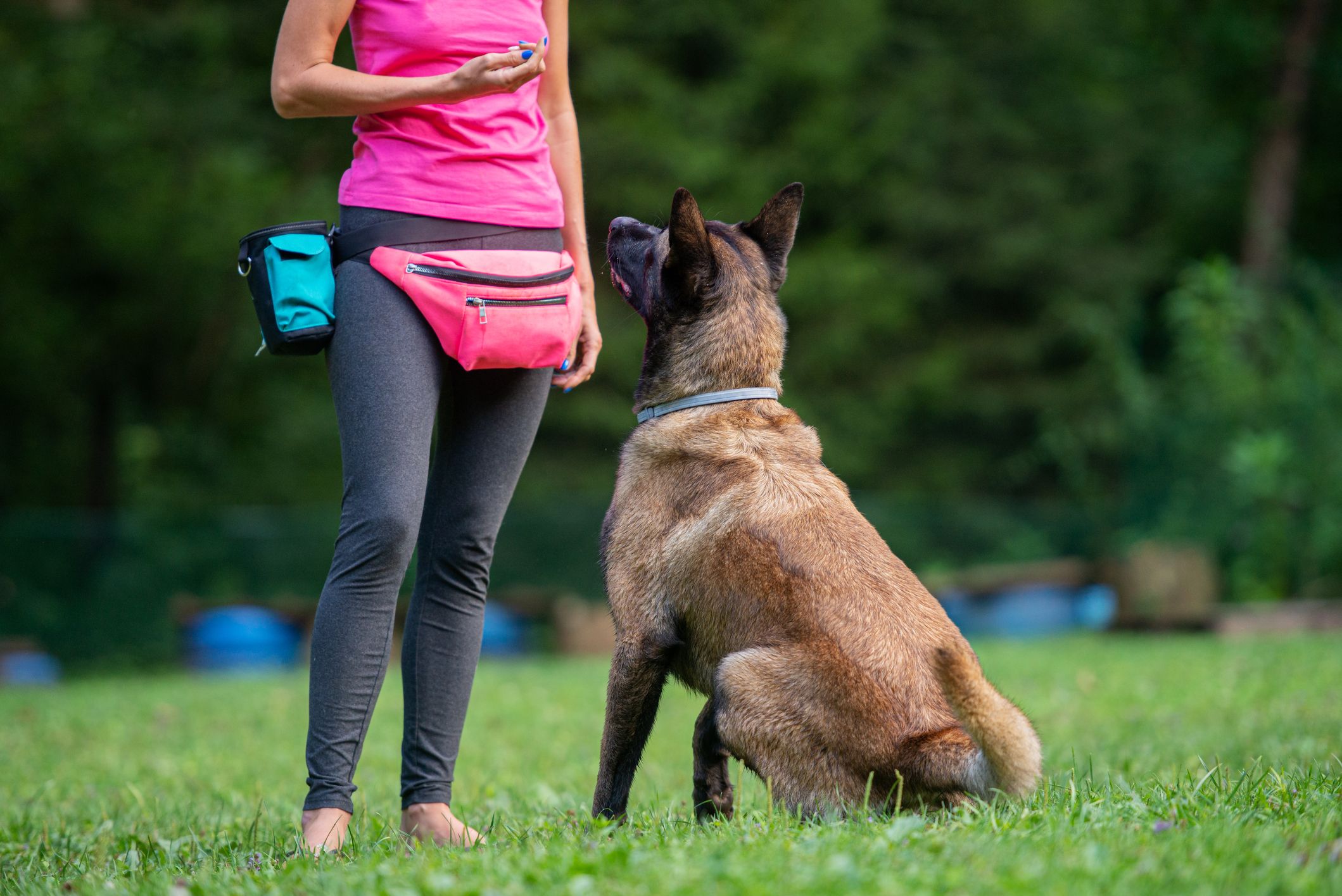Transform Your Dog's Habits With Proven Training Techniques
Changing your pet's behavior needs a nuanced understanding of their specific attributes and needs, as well as the application of proven training techniques. By employing positive reinforcement and acknowledging necessary add their body movement, you can successfully address common behavioral issues such as excessive barking or jumping. Uniformity in your training approach not only enhances obedience but also cultivates a much deeper bond of trust fund and respect in between you and your pet dog. The course to effective improvement might present unexpected challenges that warrant additional expedition.
Understanding Pet Habits
Understanding pet habits is vital for efficient training and communication in between humans and their canine friends. Pet dogs, as social animals, show a series of actions influenced by genes, atmosphere, and experiences - Dog training. Recognizing these habits aids owners customize their training approaches to meet the details needs of their pets
Secret elements of dog habits include body language, articulations, and social interactions. A wagging tail commonly shows excitement, while a lowered head may signify submission or anxiety. Comprehending these signals can aid owners translate their pet dog's emotional state and react appropriately. Furthermore, socializing plays a vital duty fit behavior; pet dogs that connect positively with various other pets and various people are typically a lot more versatile and well-adjusted.
In addition, identifying stress and anxiety signals-- such as avoidance, panting, or pacing actions-- can protect against escalation into a lot more severe problems. Owners who are attuned to their pet dog's behavior can create a risk-free and caring setting, cultivating trust fund and boosting the training procedure. Eventually, a deep understanding of canine habits lays the foundation for an unified relationship and effective training end results, guaranteeing both canines and their owners grow together.
Favorable Reinforcement Methods
Favorable reinforcement techniques are extensively identified as one of the most effective approaches for training pet dogs, cultivating a positive knowing environment. This technique includes gratifying wanted habits with treats, appreciation, or play, thus urging the pet dog to repeat those habits. Unlike corrective techniques, positive support builds depend on and strengthens the bond between the dog and the instructor.
To execute favorable reinforcement successfully, timing is essential. Incentives ought to be offered promptly following the preferred habits to aid the pet dog make the link. Consistency is likewise essential; utilizing the exact same commands and incentives helps the pet dog understand what is expected. In addition, varying the incentives can keep the dog engaged - Dog training. Rotating between deals with, playthings, and verbal praise can preserve passion and inspiration.
It is very important to note that positive reinforcement is not concerning bribery; rather, it is regarding strengthening good behavior. With time, as the pet dog finds out to associate particular activities with favorable end results, the regularity of incentives can be gradually reduced, transitioning to verbal appreciation or recurring incentives. This approach not just urges obedience yet additionally advertises a positive and delighted pet dog, making training a much more satisfying experience for both celebrations included.
Attending To Usual Issues
Addressing usual concerns throughout canine training is vital for guaranteeing a successful and harmonious relationship in between the pet dog and its owner. Many pet proprietors come across behavioral obstacles, such as extreme barking, leaping, and leash pulling. Recognizing the origin of these actions is critical for efficient training.
Too much barking might originate from monotony, anxiety, or an absence of socialization. To alleviate this, supply sufficient exercise, psychological stimulation, and chances for social interaction with both human beings and other pets. Jumping can often be an indicator of excitement or a need for interest. Educating the pet dog to sit upon welcoming can reroute this habits favorably.
Leash pulling is an additional common concern, frequently resulting from a pet's eagerness to check out. Making use of proper leash taking care of techniques, integrated with training methods that motivate loose-leash strolling, can dramatically improve this behavior.
Furthermore, concerns like resource protecting or separation stress and anxiety require customized approaches. Gradual desensitization and counter-conditioning can be efficient in attending to these challenges. By recognizing and proactively handling these usual concerns, dog owners can promote a more enjoyable training experience and strengthen the bond with their canine buddies.
Consistency in Training

To achieve consistency, it is essential that all participants of the home follow the very same training methods. Using the same verbal signs and hand signals makes certain that the pet gets consistent messages. Furthermore, the timing of corrections and incentives must correspond; prompt support enhances the possibility that the dog will link the behavior with the outcome.
Routine technique sessions, coupled with structured timetables for feeding, walking, and play, aid dogs expect and recognize their setting, making them much more receptive to training. Inevitably, uniformity promotes a sense of safety and trust, empowering canines to find out more effectively.
Structure a Solid Bond
Just how can fostering a solid bond in between a dog and its owner enhance the training experience? A solid relationship improved count on and respect acts as the structure for efficient training. When a dog feels secure in its link with its proprietor, it is most likely to display favorable actions and be receptive to finding out. This bond motivates the pet dog to engage fully in training sessions, as it views the owner as a source of advice and assistance.
In addition, a solid bond helps with better interaction. Pet dogs are experienced at reviewing human cues, and a relying on relationship enables more clear signals during training. Proprietors who spend time in structure this bond through play, socializing, and positive support produce an environment where dogs really feel motivated and anxious to learn.
Furthermore, a reputable link can reduce anxiousness and behavioral concerns, as canines are much less likely to act out when they really feel recognized and taken care of. Therefore, focusing on the development of a strong bond not just enhances the training experience yet also adds to a better and extra well-adjusted pet dog. Eventually, the trip of training transforms into a collaborative collaboration, leading to lasting behavioral renovations.
Conclusion

Owners that are attuned to their pet's habits can produce a risk-free and nurturing setting, promoting depend on and boosting the training procedure. Eventually, a deep understanding of canine habits lays the foundation for an unified connection and efficient training outcomes, guaranteeing both dogs and their proprietors prosper together.
Dealing with common concerns throughout canine training is vital for guaranteeing a pop over to this web-site successful and unified partnership in between the dog and its proprietor.Consistency is a cornerstone of reliable pet dog training, as it establishes a clear structure for the pet dog to understand behaviors and assumptions.In conclusion, changing a canine's habits through verified training methods calls for an understanding of canine behavior, the application of favorable reinforcement strategies, and a focus on uniformity.